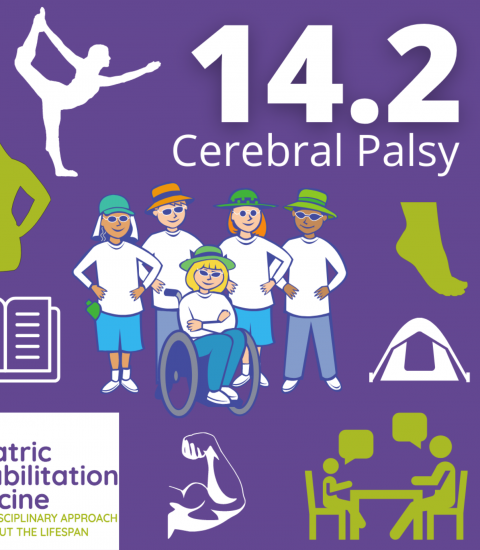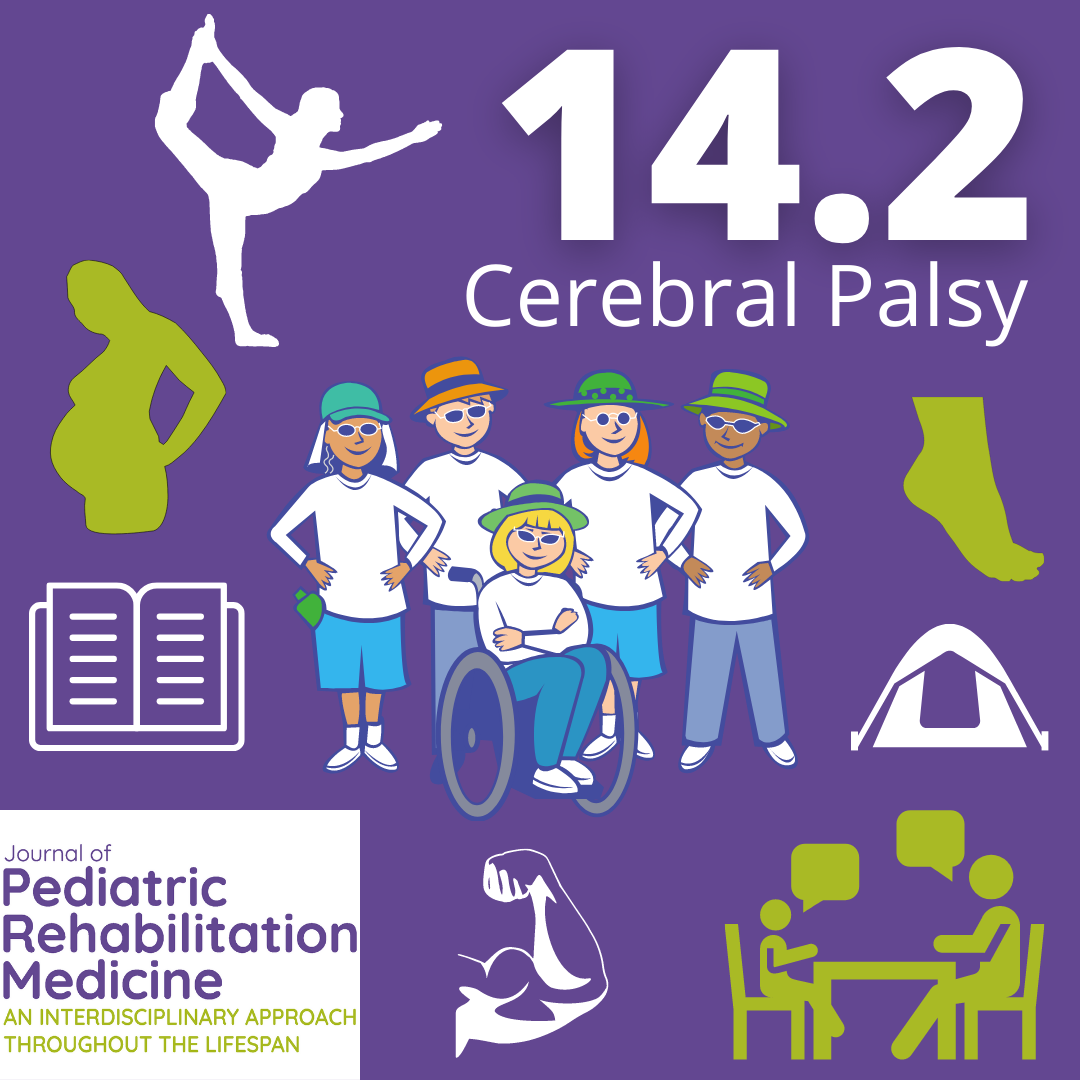
Disparities of care and limitations of access are the main focus of this special issue on cerebral palsy, published by the Journal of Pediatric Rehabilitation Medicine
“Healthcare disparity and opportunity inequities are a reality and exist for many children and adults with CP,” explained Guest Editors Deborah Gaebler-Spira, MD, Feinberg Northwestern University School of Medicine and Shirley Ryan Ability Lab/Lurie Children’s Hospital, Chicago, IL; and Michael M. Green, DO, Clinical Pediatric Rehabilitation Medicine Attending at Primary Children’s Hospital, University of Utah Health, Salt Lake City, UT. “Their challenges are our challenges as we strive for optimizing enablement, functioning, and participation for the whole population. This issue provides some ideas and insights into the problem to motivate all caregivers to be better allies, advocates, and partners with our families.”
“There are significant health and social disparities in the care of people with CP,” said Dr. Gaebler-Spira. “An important focus of this issue is on ways to recognize and react to challenges of healthcare disparity, embedded racism, and the continued problems of exclusion of disadvantaged populations.
“Another theme is maximizing equity through education and use of learning health systems to improve healthcare for children, adolescents, and adults with CP,” added Dr. Green. “Finding the most current and relevant resources is critical to shared decision making. There are regional and practitioner differences in how we manage children with CP, and we can all learn from each other to optimize outcomes.”

Recognizing health disparities among children with CP is necessary for understanding potential risk factors for CP and for implementing early and effective preventative and intervention treatments,” wrote Michael E. Msall, MD, University of Chicago Comer Children’s Hospital, Section of Developmental and Behavioral Pediatrics, Chicago, IL, and colleagues, noting that there is currently little and conflicting evidence about impact of factors such as socioeconomic status for children in the US.
“We need a greater understanding of population groups at increased risk, comprehensive assessment and care for young children with motor delays, and systematic population counts of children and adults with CP using registries and systems of neurodevelopmental surveillance across health, education, and community rehabilitation,” commented Dr. Msall. “These efforts also require sensitivity to structural and persistent racism, stigma, trauma-informed care, and culturally sensitive community engagement.”
In the first of two “Needle Tips” articles, Matthew McLaughlin, MD, University of Missouri Kansas City, Kansas City, MO, and Didem Inanoglu, MD, University of Texas Southwestern Medical Center, Dallas, TX, review decreased clinical response to therapy in pediatric patients with CP, emphasizing a precision medicine perspective in the context of current rehabilitation practice. They discuss treatment options in a thorough and detailed discussion of a young boy who was reviewed at seven and eight years old and whose family reported that botulinum toxin injections did not last as long as previously.
“A significant challenge in treating pediatric patients with CP is ensuring we are optimizing the right dose of the right medication at the right time for the right patient,” noted Dr. McLaughlin. “Future research needs to focus on better longer-term strategies to successfully prevent worsening of gait and function in this group of children,” added. Dr Inanoglu.
In the second “Needle Tips” article, Edward Wright, MD, Baylor College of Medicine and Texas Children’s Hospital, Houston, TX, and Lauren Fetsko, DO, Baylor College of Medicine, reviewed the litigation that has occurred following Botulinum Toxin Type A injections for pediatric spasticity. They encourage practitioners to be aware of potential liability pitfalls and offer suggestions for content sharing during the consent process to keep patients informed about potential adverse events. “If a serious adverse event occurs, clear documentation of information sharing and informed consent, as well as the provider-patient relationship, are critical to minimizing litigation risks,” they advised.
Other topics covered in this issue include:
• Experiences with sexual and reproductive health education and services in women with CP
• Health literacy and shared decision making
• Studies on balance games, foot and ankle somatosensory deficits, and hip surgery and radiology reporting for children with CP
• Family needs of children with CP
• Mentoring adolescents with physical disabilities attending a therapeutic camp
• Building a learning health network
A review of the American TV sitcom centered on the DiMeo family, whose oldest teen has CP and uses a power wheelchair and communication board, concludes the issue. “’Speechless’ gives us hope that attitudes are changing!” commented Dr. Gaebler-Spira.
“Looking forward, one of the challenges we face is regional limitations and unwillingness to break out of the status quo mindset,” concluded the Guest Editors. “This past year upended so much of our in-person contact at work and in meetings along with affecting time with family. However, we see the emergence of many virtual communities forming to support professional education, research, clinical care, and stakeholder engagement. Now as we round the corner of isolation to vaccination against COVID-19, there is light at the end of the tunnel. This is an era of cooperation and collaboration!”
“Dr. Gaebler and Dr. Green have continued to brilliantly expand the yearly special cerebral palsy issue and develop its depth and relevance to our present-day practice by addressing community and global concerns. Health literacy impacts everyone and is readily apparent in our worldwide interventions for those with CP and other health conditions including the handling of the COVID-19 pandemic,” stated Editor-in-Chief of JPRM Elaine L. Pico, MD, UCSF Benioff Children’s Hospital Oakland, CA. She noted that because JPRM provides an interdisciplinary approach throughout the lifespan, as evidenced by its new subtitle, the article on sexual and reproductive health in women with CP is particularly timely.
CP occurs in about 1.5 to more than 4 per 1,000 live births, and individuals with CP benefit from ongoing rehabilitation throughout childhood and into adulthood. The symptoms of CP vary over the lifespan. Commonly the first symptoms are gross motor delay due to abnormal muscle tone and decreased motor control and coordination. As children age, their muscles can become stiff and weak with subsequent orthopedic problems. Other systems affected may include vision, hearing, swallowing, speaking, bowel and bladder, and sensation. Although there is no cure, management and treatments such as medications and surgery can ameliorate complications and assist people with CP to live a full life.
# # #
NOTES FOR EDITORS
Special Issue: Cerebral Palsy
Guest Editors: Deborah Gaebler-Spira, MD, and Michael M. Green, DO
Journal of Pediatric Rehabilitation Medicine, Volume 14, Issue 2 published online at https://content.iospress.com/journals/journal-of-pediatric-rehabilitation-medicine/14/2 by IOS Press.
Featured Articles
“Addressing disparities among children with cerebral palsy: Optimizing enablement, functioning, and participation,” by Deirdre Flanagan, Deborah Gaebler-Spira, Emma-Lorraine B. Bart-Plange, and Michael E. Msall (openly available at https://content.iospress.com/articles/journal-of-pediatric-rehabilitation-medicine/prm210015)
“Botulinum Toxin Type A injections for pediatric spasticity: Keeping our patients informed and practices safe,” by Edward Wright and Lauren Fetsko (available at https://content.iospress.com/articles/journal-of-pediatric-rehabilitation-medicine/prm210031)
“Decreased clinical response to therapy in pediatric patients with cerebral palsy: Current trends and challenges,” by Matthew McLaughlin and Didem Inanoglu (openly available at https://content.iospress.com/articles/journal-of-pediatric-rehabilitation-medicine/prm210028)
Full text of all articles is available to journalists upon request. Contact Diana Murray, IOS Press, at +1 718-640-5678 or d.murray@iospress.com. Journalists who wish to interview the guest editors or authors should contact Deborah Gaebler-Spira, MD, at dgaebler@sralab.org.
ABOUT THE JOURNAL OF PEDIATRIC REHABILITATION MEDICINE
Editor-in-Chief: Elaine L. Pico, MD, FAAP, FAAPM&R, UCSF Benioff Children’s Hospital Oakland
The Journal of Pediatric Rehabilitation Medicine (JPRM): An Interdisciplinary Approach Throughout the Lifespan is designed to parallel the multidisciplinary teams caring for children, adolescents, and adults with childhood-onset physical disabilities and complex care needs worldwide. Published quarterly, topics include, and are not limited to, cerebral palsy, traumatic brain injury, spinal cord injury, spina bifida, limb deficiency, muscular dystrophy, stroke, cancer, developmental delays, and rare disorders. Furthermore, the journal welcomes papers dedicated to pediatric rehabilitation from a global health perspective. www.jpedrehabmed.com
ABOUT IOS PRESS
IOS Press is headquartered in Amsterdam with satellite offices in the USA, Germany, India, and China and serves the information needs of scientific and medical communities worldwide. IOS Press now publishes more than 90 international peer-reviewed journals and about 70 book titles each year on subjects ranging from computer science, artificial intelligence, and engineering to medicine, neuroscience, and cancer research. www.iospress.com
